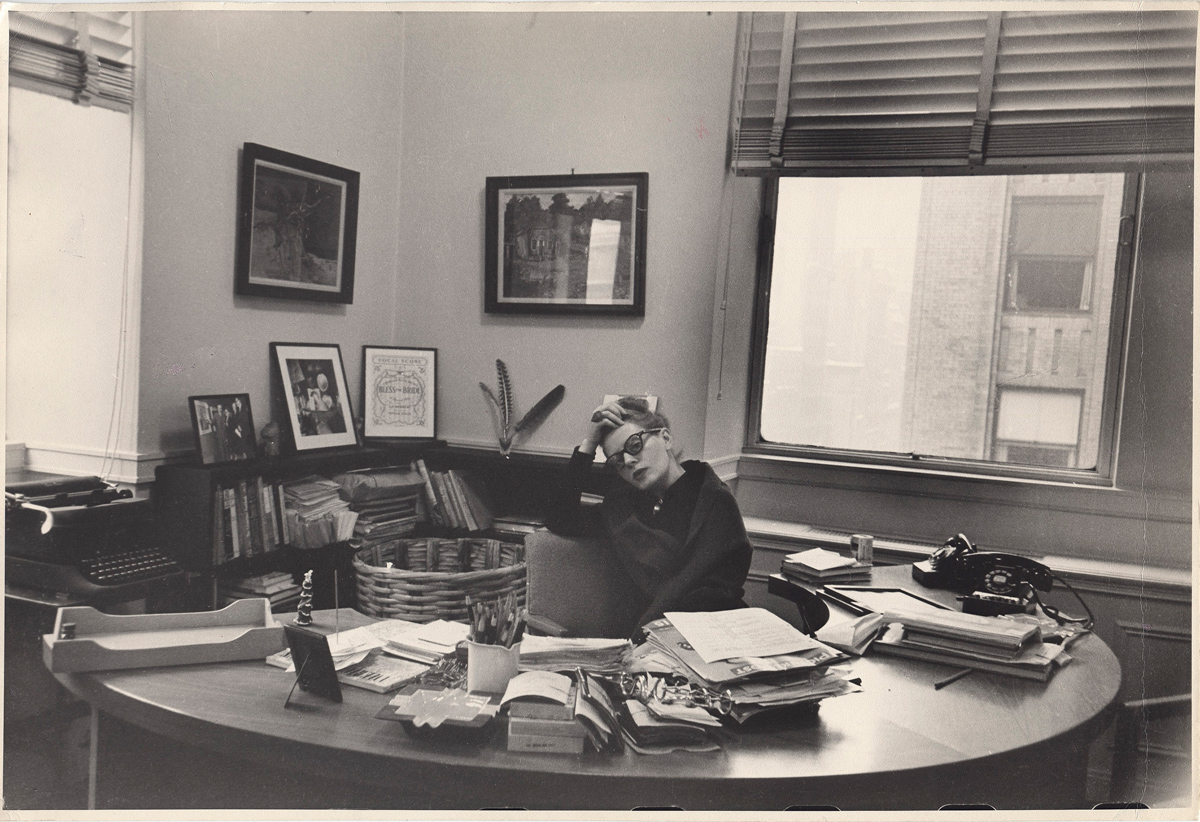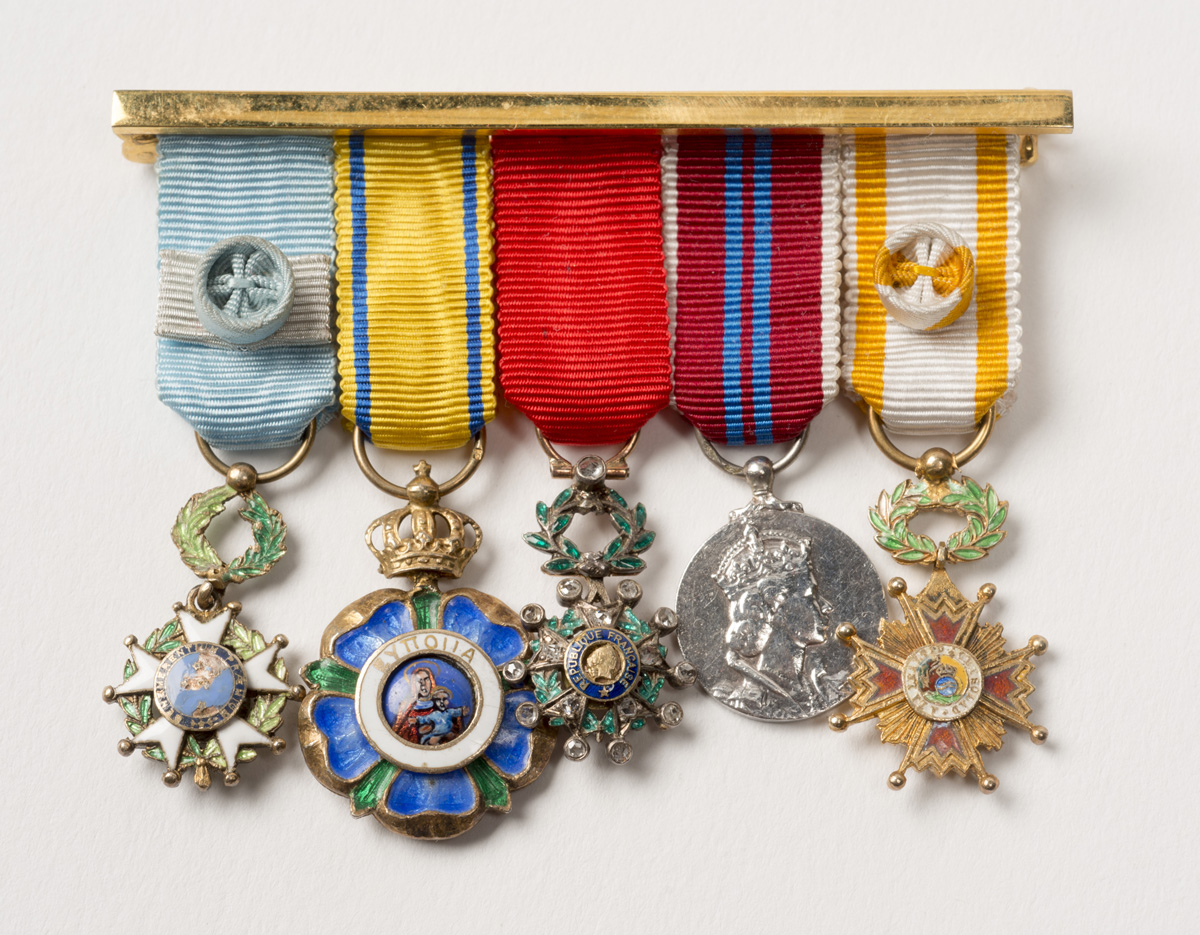Fleur Cowles rose from humble origins in New York to become a magazine editor and publisher as well as an avant garde member of high society. Within the Harry Ransom Center is a replica of Cowles’s London study.

The room was established alongside the Fleur Cowles Endowment, which supports fellowships for research, Fleur Cowles interns, an international biennial conference named the Flair Symposium, maintenance of the Fleur Cowles Room for teaching and research in the academic disciplines of the Ransom Center, and lectures by experts in relevant fields of study. Among the many items in the room is the recent addition of a framed box of medals Cowles received in her lifetime in recognition of her work in support of spreading the culture of and goodwill toward several countries. Cowles’s archive was donated to the Ransom Center in 2011.

Cowles published Flair magazine, a work known for its provocative design, enlightened articles, and sophisticated advertising layouts. Published from February 1950 to January 1951, the magazine’s one-year run left an indelible mark on publishing history. In addition to her work in publishing, Cowles was an author and artist. She wrote more than 15 books, including collections of autobiographical anecdotes such as Friends & Memories and All Too True, and an authorized biography of Salvador Dalí.

Early in her career, Cowles established an advertising firm, while also writing speeches for the War Production Board. She became the first civilian American woman to visit Europe after Victory in Europe Day. She later worked as Special Consultant to the Famine Emergency Committee assisting Herbert Hoover, its chairman, in 1946. This entrée into the White House circle—along with the connections, wealth, and status achieved through magazine publishing—led to the distinctions she later received from heads of state.
England, 1953
As an editor for Look magazine, Cowles traveled around the world on assignments, establishing friendships in Brazil, Argentina, Taiwan, and Korea. Having worked for Dwight Eisenhower’s presidential campaign, she became his unofficial representative to Persia, Egypt, Cyprus, and Brazil. She socialized with—and reported back to Eisenhower about—those countries’ top leadership, including the Shah of Iran and his wife, Egyptian premier Gamal Abdel Nasser, the King and Queen of Greece, and the adviser to Brazil’s President Vargas. She accepted Eisenhower’s assignment as special Ambassador to Queen Elizabeth II’s coronation in 1953. Within the Cowles archive are five boxes of material relating to the coronation and the Queen.
This medal is a silver disk with the Queen’s profile, hanging from a red ribbon with a double blue stripe; it would have been worn on the left shoulder.

Brazil, 1950 and 1962
Knight of the Southern Cross, later Commander of Southern Cross (increased level due to years of service).

France, 1952
Foreign nationals receive the Legion of Honor award in recognition of having served the ideals of France.

Greece, 1954
Order of Bienfaisance, which is conferred upon foreigners who, due to their distinguished position and through their personal worth, have contributed to the promotion of Greece. (Shown second from left in below photo).
Spain, 1976
Cowles and her fourth husband Tom Meyer restored a twelfth-century castle for their summer residence in Trujillo, Spain. For this, she received the medal of the Order of La Dama Isabel la Católica, which recognizes Spanish nationals and foreigners alike for extraordinary contributions to Spain or for contributing to favorable relations of friendship and cooperation between Spain and the rest of the world. (Shown far right in below photo).

Research has been conducted in the collection by Teal Triggs, Professor of Graphic Design and Associate Dean at Royal College of Art, London. As a graphic design historian, her research focused on the significance of Flair; materials in the archive provided useful insights into Cowles’s extensive social network, her commitment to the arts, and her working methods as a writer and editor. Triggs’s research was supported by a Fleur Cowles Endowment fellowship from the Ransom Center.

